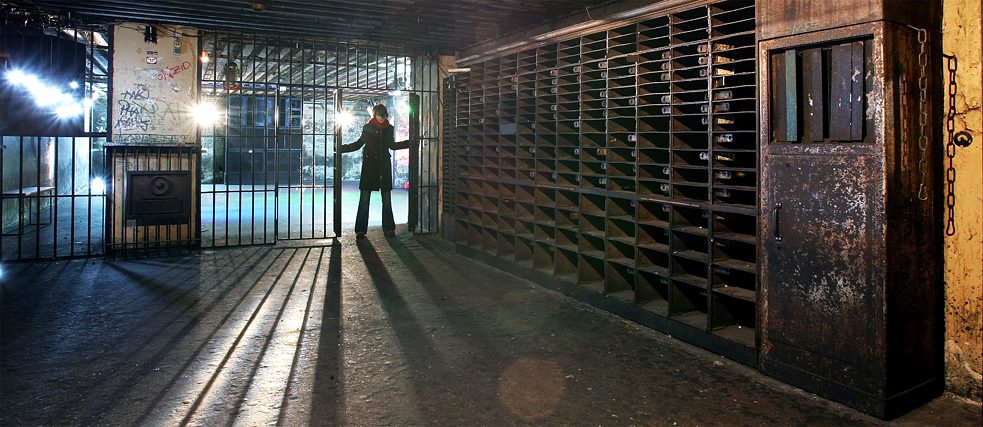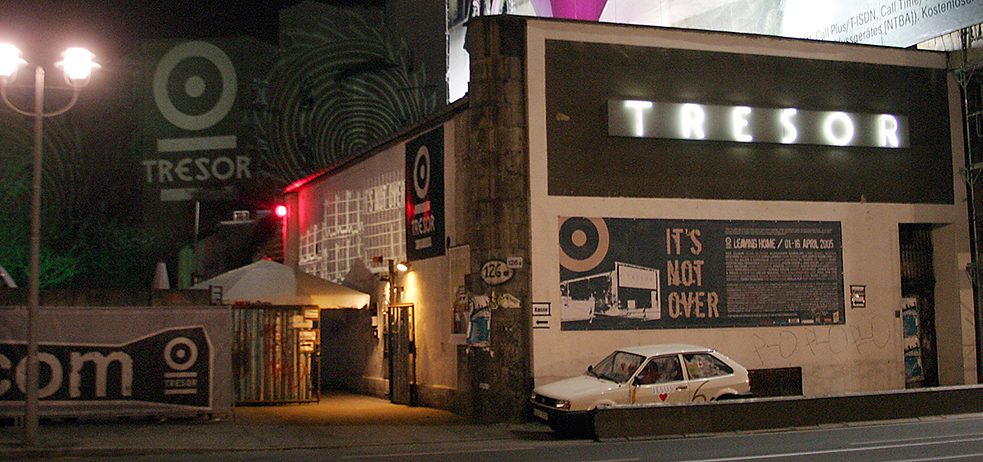The 90s techno scene
Dancing in a vault

For many people techno is the sound that defined the 1990s. In Germany, Berlin was the epicentre of the new music genre, and before mass events like the Love Parade began, raves took place inside a fairly small circle of party-goers – and in some very unusual places.
By Nadine Berghausen
Berlin’s party hungry hung on every word when Moni D., aka Monika Dietl, took to the mic. She hosted The Big Beatshow on youth radio station Radio 4U, where every Saturday night she sent out a coded message about where all the illegal techno parties were taking place. Moni D. closed her show by advising young ravers to “shut up and dance.”
This slogan aptly describes why techno music took over 1990s Berlin. The mid-1980s swansong of punk and new wave had left Berlin’s club scene a bit lacklustre and dull. Then acid techno swept in, introducing a new party culture to the once-divided city. Initially only known to a small in-crowd, it seemed would-be dancers and partiers were hungry for a new groove, and the trend took off.
The new raves had little in common with the more stylised parties of the 1980s, where cool guests leaned up against the bar, cocktail in hand. Now people jumped, jerked and jiggled in the blinking light of the techno strobe. Etiquette and outfit, ‘seeing and being seen’ receded into the background as the spotlight turned on dancing into a frenzied trance.
Underground raves
East and West Berlin techno fans joined forces the moment the Berlin Wall fell. “It took just two days to unify the techno scenes,” East Berlin DJ Paul van Dyk recalls. “The borders opened on a Thursday, and we threw a party together in the West Berlin cult club Ufo on Saturday.” The scene took advantage of the optimism generated by reunification to turn techno into a joint venture of sorts. Young people from East Berlin were looking to let off steam after all the oppression of the SED regime. So they threw in their lot with West Berlin’s techno kids to throw infamous raves at the darkest, dankest underground locations.
A ladder through a narrow hold in the floor of a private flat was the only way into the Ufo Club in Köpenicker Straße. Once in the depths, ravers found themselves in low cellar vault with space for around 40 people. Spaces like this or difficult-to-access bunkers gave the scene a certain flair. The people who gathered here felt at home in this anarchic atmosphere. They could party the night away undisturbed with no curfew, and around the fall of the Berlin Wall the police had more pressing worries than cracking down on young people finding new uses for bunkers abandoned by the National People’s Army.
Tresor was another legendary venue, a dance space in the defunct vault of a large department store near Leipziger Platz. DJ Mijk van Dijk remembers the club’s unique atmosphere: “Just walking down the long hall to the basement seemed like a transition from one world to another. The deeper you got, the hotter and steamier it got. The music grew louder and more intense, the old walls vibrating in time with the base and the condensation dripping from the ceiling.”
The ambience established in these clubs is still part and parcel of the image of Berlin’s creative scene today. Expensive and chic are not what counts here, where artists value the down-to-earth, nitty-gritty style of the clubs, galleries and studios.
 In the 1990s, Tresor was one of the most famous techno clubs in the world.
| Photo: © picture-alliance/dpa/dpaweb/ XAMAX
In the 1990s, Tresor was one of the most famous techno clubs in the world.
| Photo: © picture-alliance/dpa/dpaweb/ XAMAX
The day the bass died
Then the Berlin Love Parade and the Mayday in Dortmund brought techno out of the shadows and into the mainstream. In the early days, Berlin’s techno in-crowd might have been too exclusive, and maybe the clubs were too uncomfortable for many, the beats too aggressive. In time though, the driving techno beats gave way to a sound more acceptable to the masses, like the drum and bass genre. DJ Thanith, one of the original techno DJs, recalls when the first techno era so influential in Berlin at the beginning of the 1990s drew to a close: “A lot of people had had enough of the pounding rhythm and were looking to hang in a more lounge-like atmosphere. Berlin was no longer all about the beat.”
Comments
Comment